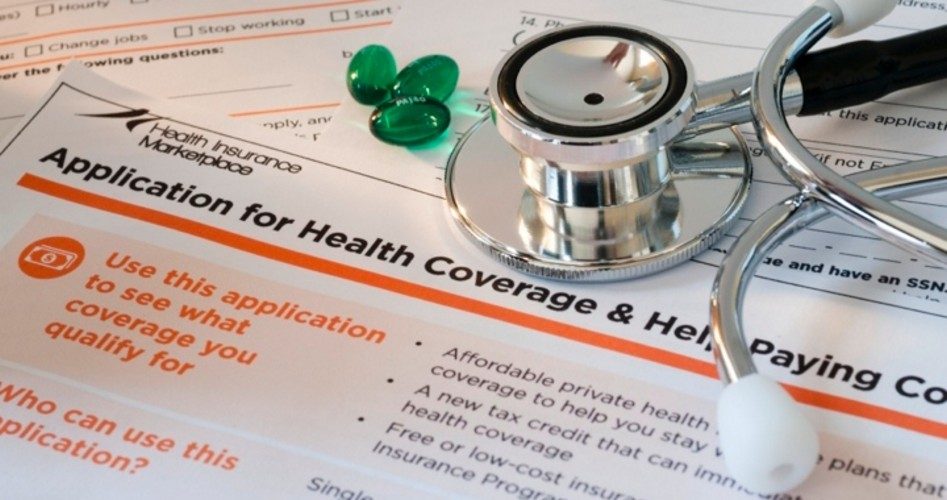
ObamaCare’s exchanges are, as critics predicted, in trouble, with the enrollee pool heavily skewed toward the old and the ill. One reason for that, insurers say, is that average Americans — who tend to find ways to foil the best-laid plans of congressmen and presidents — have discovered how to obtain exchange coverage just when they need it and, if possible, without paying for it.
It’s not hard to figure out why the young and the healthy are avoiding the exchanges. Exchange health plans are expensive, particularly for those ineligible for subsidies, and they keep getting more costly every year. According to Freedom Partners, a free-market-oriented nonprofit, individual-market premiums will rise this year in 49 states, with 28 states facing double-digit hikes.
A significant contributor to these rate increases is the number of sick, and therefore costly, enrollees. Under the Affordable Care Act (ACA), these people cannot be denied health insurance as long as they enroll in coverage during specified periods. However, the Obama administration, in its eagerness to get as many people enrolled as possible, has repeatedly loosened the enrollment rules, enabling people to buy coverage when they get sick and then drop it afterward, leaving insurers with big bills and no premiums with which to pay them.
In November, UnitedHealth Group, the nation’s largest health insurer, announced it would likely be withdrawing from the exchanges after 2016 because of large losses. “We have identified higher levels of individuals coming in and out of the exchange system to use medical services,” said CEO Stephen Hemsley.
“A strictly defined and enforced open season is required in Obamacare for the same reason it is required in employer-based group plans: When health insurance is guaranteed issue without underwriting for health status it is an important way to limit people’s ability to wait until they get sick to buy coverage,” explained John Graham, senior fellow at the National Center for Policy Analysis.
The Obama administration, by contrast, extended the open-enrollment periods for 2014 and 2015 and even created special enrollment periods for people who didn’t realize they were going to be penalized under the individual mandate until they filed their taxes, which often happened after the enrollment period had ended. In addition, the administration has provided for special enrollments supposedly for those undergoing a major life event such as divorce or job loss. But according to Politico, “America’s Health Insurance Plans, the industry’s main lobbying group, has identified 41 reasons consumers can use to sign up for coverage outside of the standard window, including natural disasters and a change in immigration status.” The organization told the administration that those enrolling under the special rules are “incurring extremely higher costs over the rest of the ACA risk pool.”
“About half of those enrolling in plans outside the standard window say they’ve lost health coverage, typically because of a job change,” noted Politico. That may well be true — some Americans are even choosing to reduce their work hours or to quit temporarily to get subsidized coverage in a pinch, reported Investor’s Business Daily — but since people aren’t required to document their life changes when applying for coverage, insurers don’t really know who is deserving of coverage or, for that matter, of subsidies.
“The back-end of the healthcare.gov website is still not complete and may never perform the way the administration portrayed it five years ago,” wrote American Thinker’s Rick Moran. “The IRS is still not able to communicate with health insurance companies to confirm information like a job change or change of address. Companies are forced to take a leap of faith when a customer receives a subsidy as a result of those life changes.”
How bad is the problem of special enrollment? Politico:
[The Blue Cross Blue Shield Association] calculates that exchange customers who sign up during special enrollment periods are 55 percent more expensive than their counterparts who enroll during the regular season. Aetna estimates that 25 percent of its HealthCare.gov enrollments last year came through special enrollments and those members have “unusually high claims generation” and remain on the rolls for less than four months on average — less than half the time of other Obamacare consumers.
UnitedHealth Group said last year that it expected 30 percent of its exchange enrollments to come outside the normal sign-up window — and that those customers were 20 percent more expensive than other Obamacare enrollees.
Another major issue for insurers is the administration’s grace period for beneficiaries who haven’t paid their premiums. As it currently stands, consumers can continue to receive coverage for 90 days after they stop paying for it, meaning that an individual can obtain a full year’s worth of coverage while only paying for nine months’ worth.
All of this is adding up to big trouble for insurance companies — Humana being the most recent to announce it will probably leave the exchanges because of large losses — who are demanding the administration make some changes to the enrollment rules.
“Unless some fundamental flaws are corrected, we believe there is a grave risk that the federal exchange will not operate as a viable, competitive market in 2017,” Aetna told the administration regarding proposed 2017 rules.
Monday night, Andy Slavitt, former UnitedHealth executive and current acting administrator for the Centers for Medicare and Medicaid Services, spoke at the J.P. Morgan Healthcare Conference in San Francisco. According to Politico, Slavitt “acknowledged the problems and said the administration would tighten the rules for special enrollments — and terminate coverage for those who [are] found to have signed up improperly.”
“There are some [special enrollment periods] that we need to clarify because they’re subject frankly to abuse,” Slavitt said. “There may be bad actors and others out there who are abusing those.”
Slavitt also, according to Graham, promised “more announcements on managing Obamacare’s risk pool over the next few weeks, and a public conference on March 25 to review risk adjustment.”
Will these changes be sufficient to save the exchanges? Graham is skeptical.
“The notion that [a] tighter open season will get more people to sign up is questionable,” he wrote. “The individual penalty is the most unpopular part of the law. Further, the next president will be less invested in (or entirely opposed to) the law, and therefore less willing to strong-arm people into it.”
While the risk-management review is “more promising” and “necessary” to keep insurers on the exchanges, Graham maintained, “it is likely not sufficient to attract applicants” because of the cost of coverage. Middle- and upper-income Americans see little value in shelling out hundreds or thousands of dollars for health plans that leave them open to paying even more thousands in healthcare costs. The federal government would have to subsidize coverage for millions more to attract enough healthy individuals to offset the cost of covering the sick who have flooded the exchanges, something that “cannot happen under the law as written.”
In short, absent a major overhaul of the ACA, the exchanges are probably doomed. Of course, what is really needed is not overhaul but repeal — and that, assuming it happens at all, is at least a year away.



